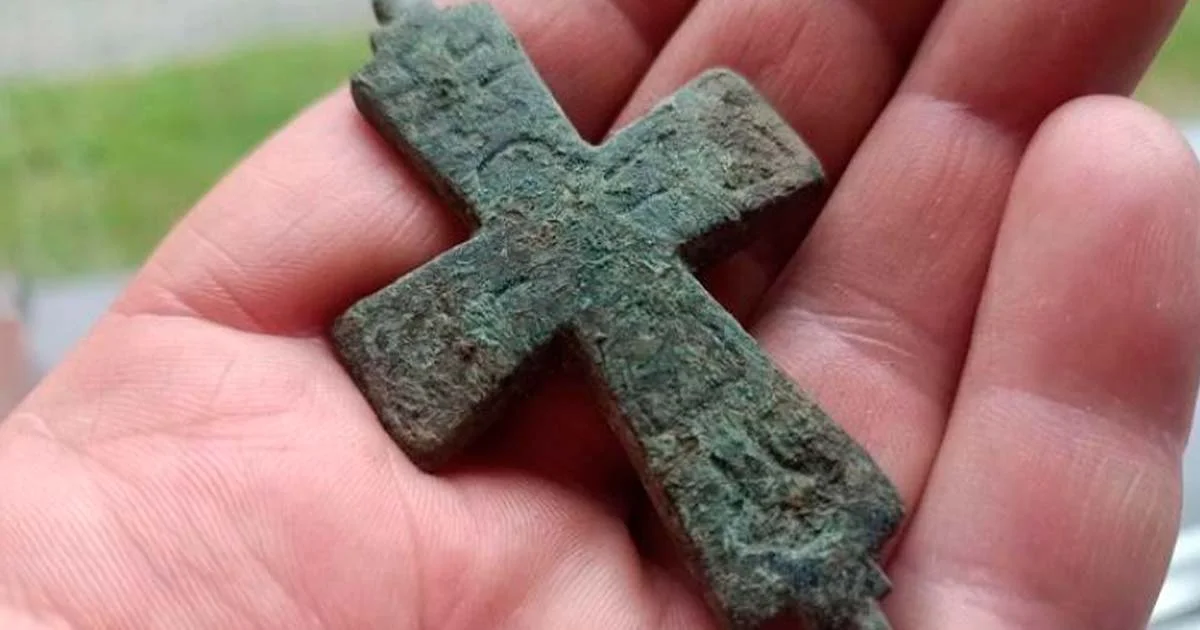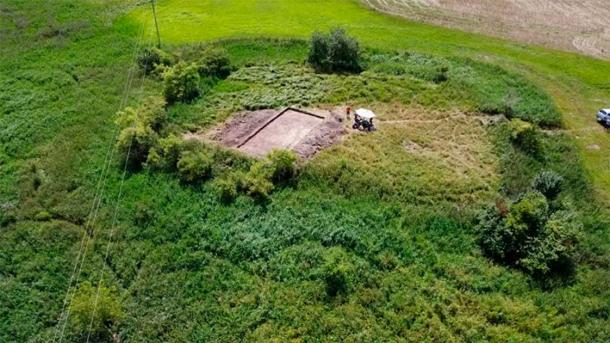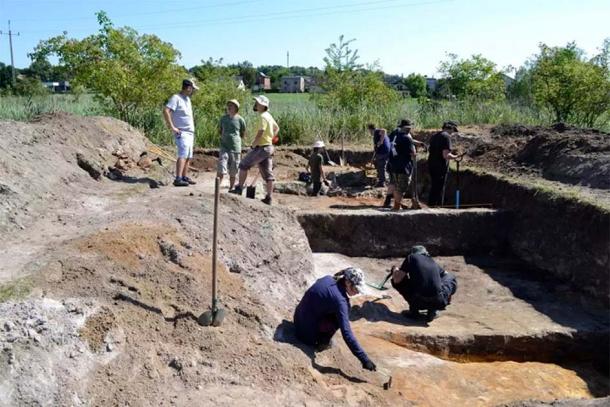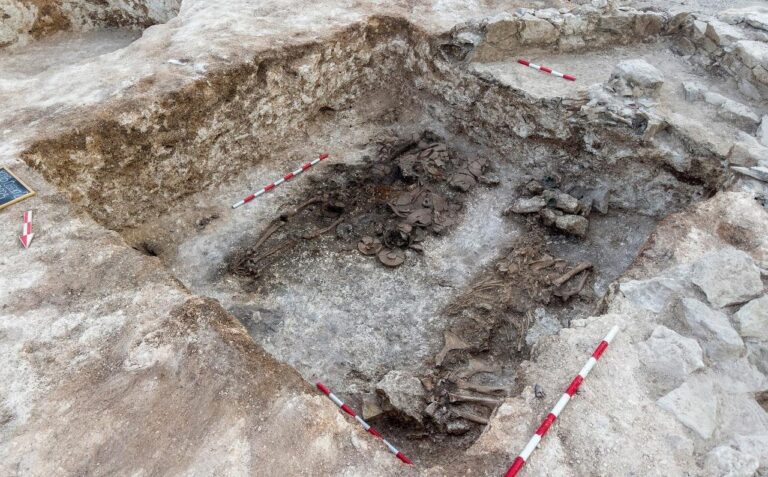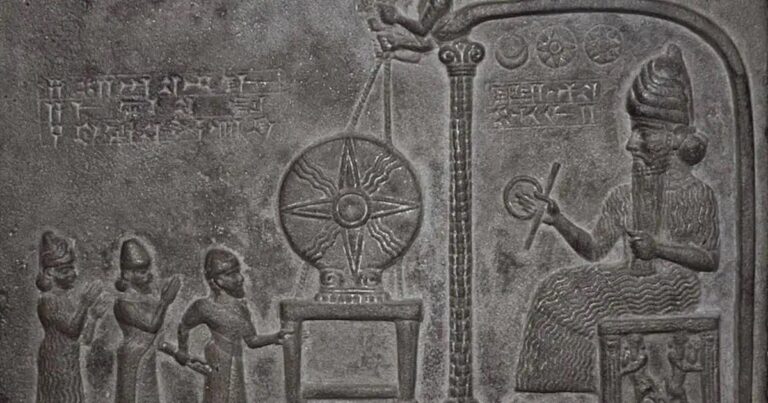Medieval knight’s reliquary found in Poland
Archaeologists have discovered a relic of remarkable rarity associated with a medieval knight.
The rare medieval knight’s reliquary – an encolpion. Source: Institute of Archaeology, University of Lodz
In Poland, the first study of mound relics in Wozniki, an ancient fortress, was conducted in a completely systematic way, revealing a remarkable and rare find: an encolpion, a cross-shaped reliquary.
CONTINUA DEPOIS DA PUBLICIDADEIn addition, during the excavation, a series of artifacts made of clay and iron were unearthed, including door fittings, a padlock, a key, nails, hooks, staples and a carder. These discoveries shed light on the rich military and religious history that is intrinsically linked to this ancient fortress.
Located in Lubliniec County, Poland, this fortress played the role of a knight’s residence throughout the 14th and 15th centuries. Its historical importance was first investigated in the 19th century under the auspices of the Archaeology Department of the Museum of Upper Silesia in Bytom.
It is believed that the fortress was consumed by a fire during the first half of the 15th century, although the circumstances that led to this event remain unclear.
CONTINUA DEPOIS DA PUBLICIDADETime and intense agricultural activity have largely covered the archaeological remains of the fortress on the surface, making its rediscovery a remarkable event. Thanks to a recent geophysical study carried out by researchers from the University of Łódź, the remains of the fortress and its associated structures have been revealed.
The researchers also found the preserved remains of the lower level of a wooden structure, along with the artifacts of a cupola furnace that occupied one of its corners. This furnace was probably used to heat the interior of the residence. The fortress was built at the end of the 13th century, with later additions in the second half of that period.
This year’s archaeological research was carried out by archaeology students from the University of Lodz, guided by professors from the Institute of Archaeology and Ethnology of the Polish Academy of Sciences in Łódź, Jan Długosz University in Częstochowa and Wojciech Kawka from Bytom.
CONTINUA DEPOIS DA PUBLICIDADEThis highlights the interdisciplinary nature of the research team and the collaboration between academic institutions in the search for a deeper understanding of the past.
The most notable discovery in this excavation was the cross-shaped encolpion. Derived from the Greek words “en”, meaning “inside”, and “kolpos”, meaning “chest”, the encolpion was a religious pendant worn by Christians, notably Eastern Orthodox and Eastern Catholic bishops, on their chests.
These pendants usually contained sacred relics, passages from the Holy Scriptures, fragments of scripture or even a part of the Eucharist.
CONTINUA DEPOIS DA PUBLICIDADEEncolpions played a significant role in the Christian faith, serving as visible reminders of the spiritual role of their wearers. In addition, these pendants were consecrated or blessed before being worn, believed to offer protection and blessings.
Today, these items are prized as treasures, both for their historical and artistic value.
See also: 10 of the oldest books in the world
CONTINUA DEPOIS DA PUBLICIDADEThis unique find provides a fascinating glimpse into the religious and military history of the Wozniki fortress. It reminds us of Poland’s rich cultural and religious heritage and the importance of continuing to explore and preserve our past in order to better understand the present.
Archaeological research and the discovery of the encolpion are examples of how collaboration between academic institutions and the dedicated efforts of students can uncover secrets buried in the ground for centuries.
As more information comes to light, we are closer to reconstructing the complete history of this medieval fortress and its significant religious and military heritage.
CONTINUA DEPOIS DA PUBLICIDADEVia: Verdade Ufo
function myScripts() {
// Paste here your scripts that use cookies requiring consent. See examples below
// Google Analytics, you need to change 'UA-00000000-1' to your ID (function(i,s,o,g,r,a,m){i['GoogleAnalyticsObject']=r;i[r]=i[r]||function(){ (i[r].q=i[r].q||[]).push(arguments)},i[r].l=1*new Date();a=s.createElement(o), m=s.getElementsByTagName(o)[0];a.async=1;a.src=g;m.parentNode.insertBefore(a,m) })(window,document,'script','//www.google-analytics.com/analytics.js','ga'); ga('create', 'UA-00000000-1', 'auto'); ga('send', 'pageview');
CONTINUA DEPOIS DA PUBLICIDADE// Facebook Pixel Code, you need to change '000000000000000' to your PixelID !function(f,b,e,v,n,t,s) {if(f.fbq)return;n=f.fbq=function(){n.callMethod? n.callMethod.apply(n,arguments):n.queue.push(arguments)}; if(!f._fbq)f._fbq=n;n.push=n;n.loaded=!0;n.version='2.0'; n.queue=[];t=b.createElement(e);t.async=!0; t.src=v;s=b.getElementsByTagName(e)[0]; s.parentNode.insertBefore(t,s)}(window, document,'script', 'https://connect.facebook.net/en_US/fbevents.js'); fbq('init', '000000000000000'); fbq('track', 'PageView');
}
Quer continuar acompanhando conteúdos como este? Junte-se a nós no Facebook e participe da nossa comunidade!
Seguir no Facebook
